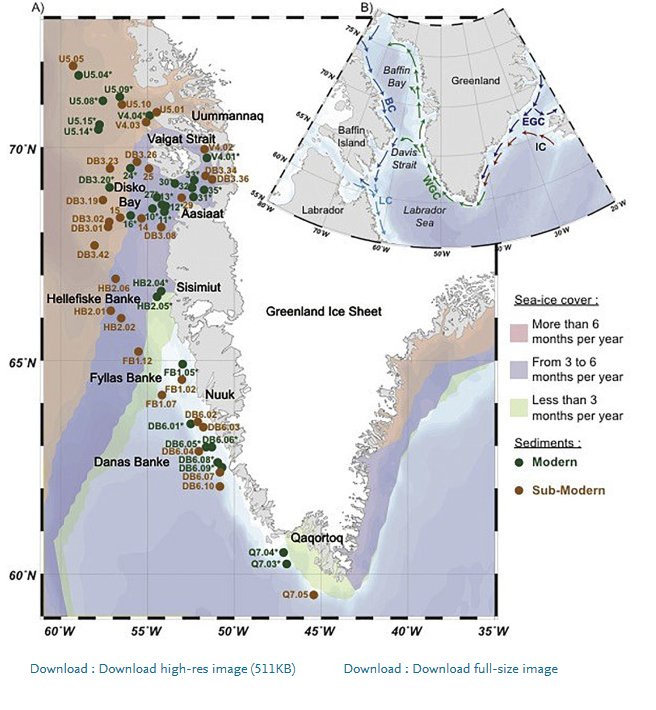Distribution of dinocyst assemblages in surface sediment samples from the West Greenland margin
New publication by Allan, Estelle; de Vernal, Anne; Krawczyk, Diana; Moros, Matthias; Radi, Taoufik; Rochon, André; Seidenkrantz, Marit Solveig; Zaragosi, Sébastien

Abstract:
Palynological analyses of 60 surface sediment samples from West Greenland margin revealed high concentrations of dinoflagellate cysts (dinocysts), particularly in the Disko Bugt area, where they reach >104 cysts g−1. Dinocyst assemblages are characterized by a relatively high species diversity and are dominated by Operculodinium centrocarpum, cysts of Pentapharsodinium dalei, Islandinium minutum, Islandinium? cezare, and Brigantedinium spp. On a regional scale, the overall assemblages show statistical relationships with sea-ice cover duration, primary productivity, salinity and summer-fall temperature. The cysts of Pentapharsodinium dalei, Operculodinium centrocarpum, and Spiniferites elongatus appear linked to high productivity and to characterize the late summer-fall bloom. Although Islandinium minutum and Islandinium? cezare are generally associated with a seasonally sea-ice covered environment, there is no linear relationship between their relative abundance and sea-ice concentration or duration on a regional scale, along the West Greenland margin. The abundance of these taxa primarily reflects cold and low-salinity water in the study area. Radionuclide measurements (210Pb and 137Cs) allow the distinction between two categories of samples, the “modern” ones likely encompassing the interval younger than 1950 CE, and the others that may be considered “sub-modern”. Statistical analyses indicate that dinocyst assemblages belonging to “modern” and “sub-modern” categories are not significantly different. Hence, the dinocyst assemblages of surface sediment samples, both “modern” and “sub-modern”, represent fluxes homogenized over a relatively long time interval, which illustrates a spatial distribution corresponding to the main gradient in oceanographic conditions. Consequently, dinocyst assemblages in surface sediments can be assumed to represent the average “modern” conditions with a sufficiently high degree of confidence for their use in environmental studies and paleoclimate reconstructions.
